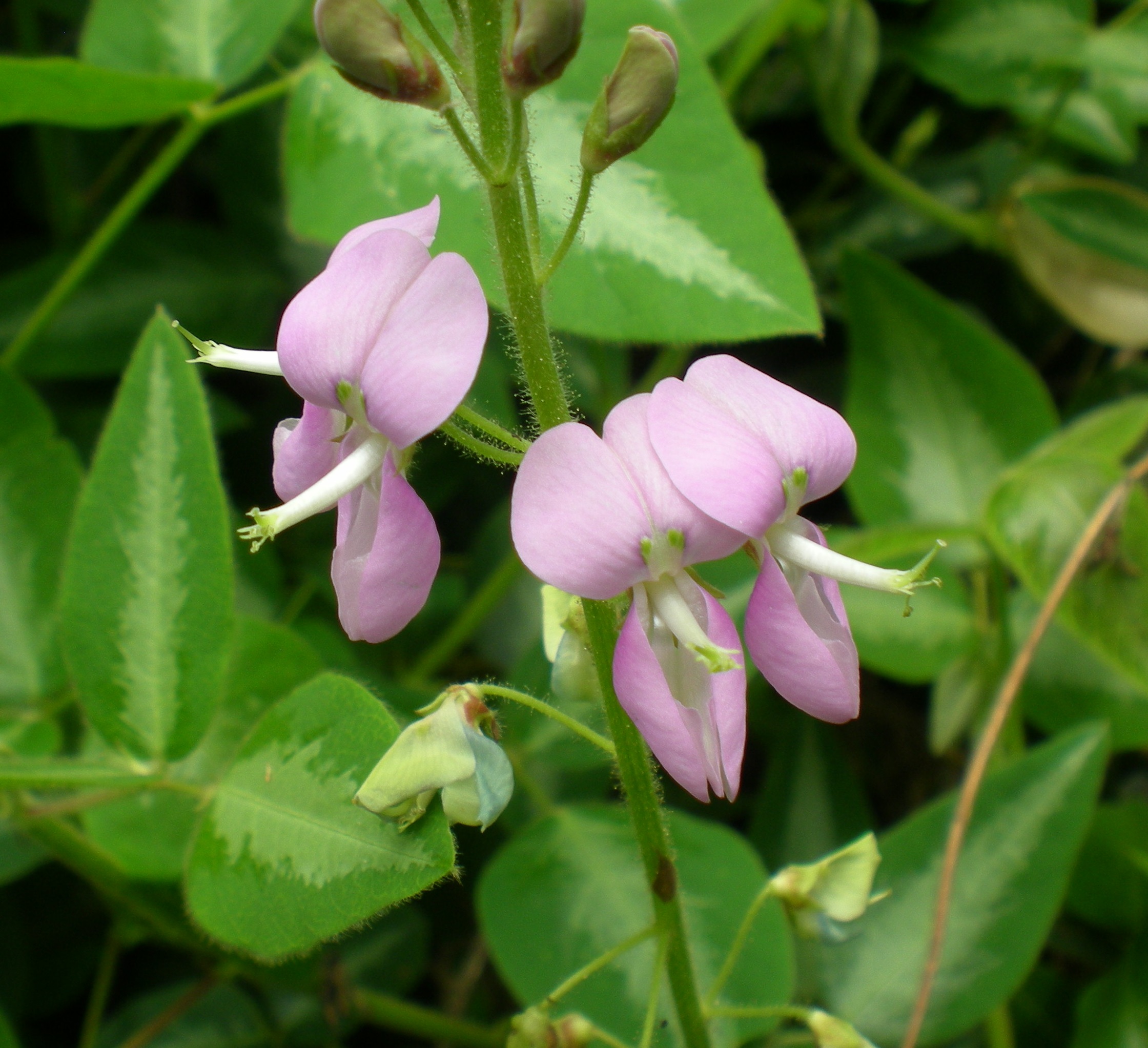Pollination ecology of Desmodium setigerum (Fabaceae) in Uganda; do big bees do it better?
DOI:
https://doi.org/10.26786/1920-7603(2016)1Abstract
Explosive pollen release is documented in many plant families, including the Fabaceae. Desmodium setigerum E. Mey (Fabaceae) is a perennial herb with single trip explosive pollen release found in eastern Africa, and the unique ability to reverse floral colour change if insufficient pollination has occurred. However, little else is known about the pollination ecology of this species, what visitors can trigger explosive pollen release, and whether bee body size is related to pollination efficiency. We investigated: 1) the breeding system of D. setigerum, and whether it is pollen limited; 2) whether flowers are visited early in the day allowing sufficient time for a second opportunity for pollination; and 3) what insect species visit D. setigerum and the relative efficacy of different flower visitors in relation to visitor size and pollination success. We found that although self-compatible, D. setigerum requires insect visitation to set seed as explosive pollen release is needed even for selfing. Most flowers are initially visited before 1400h, and by 1800h nearly all flowers have been tripped. Flowers were not pollen limited in this study, and were visited primarily by bees. We observed 16 visiting species, and there was a wide variation (0-404 grains) in the amount of pollen deposited on stigmas. Although almost all bees deposited some pollen, the mean number of pollen grains deposited in a single visit per species was negatively related to body size. However, one particular megachilid species deposited significantly more pollen grains than any other visitor and so is likely an important pollinator of this species. This provides insights into the pollination biology of this unique plant species, and adds to increasing literature on the relationships between bee body size, explosive pollen release and pollination effectiveness.

Downloads
Published
How to Cite
Issue
Section
License
Copyright (c) 2016 Dara Stanley, Mark Otieno, Karin Steijven, Tiina Piironen, Pat Willmer, Clive Nuttman

This work is licensed under a Creative Commons Attribution 4.0 International License.
JPE is an open access journal which means that all content is freely available without charge to the user or his/her institution.
Authors who publish with this journal agree to the following terms:
1) Authors retain copyright and grant the journal right of first publication with the work simultaneously licensed under a Creative Commons Attribution License that allows others to share the work with an acknowledgement of the work's authorship and initial publication in this journal.
2) Authors are able to enter into separate, additional contractual arrangements for the non-exclusive distribution of the journal's published version of the work (e.g., post it to an institutional repository or publish it in a book), with an acknowledgement of its initial publication in this journal.
3) Authors are permitted and encouraged to post their work online (e.g., in institutional repositories or on their website) prior to and during the submission process, as it can lead to productive exchanges, as well as earlier and greater citation of published work (See The Effect of Open Access).
To assure a broader targeted audience, content will be included into databases (such as EBSCO) and directories (such as DOAJ).











